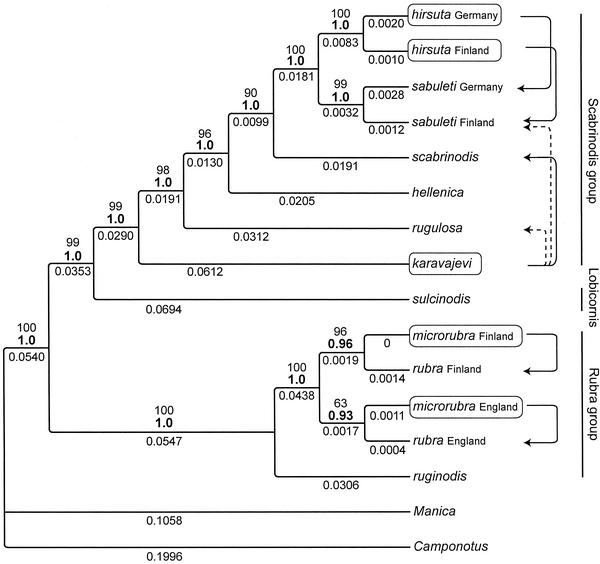Fig. 1.
Majority-rule consensus tree of 9,000 Bayesian trees. Bold numbers above branches represent the posterior probability that the clade is correct, given the model of evolution, and numbers above the posterior probabilities are bootstrap proportions; average branch length estimates from the Bayesian analysis are given below the branches (tree length = 1.206). The single most parsimonious tree topology is identical to that of the Bayesian consensus tree. Parasites are given in frames with solid arrow lines pointing to their hosts in this study; other documented karavajevi hosts, rugulosa and sabuleti (43), are shown with dashed lines. The three species groups shown with vertical lines are defined on the basis of worker morphology, excluding the inquilines (47).

